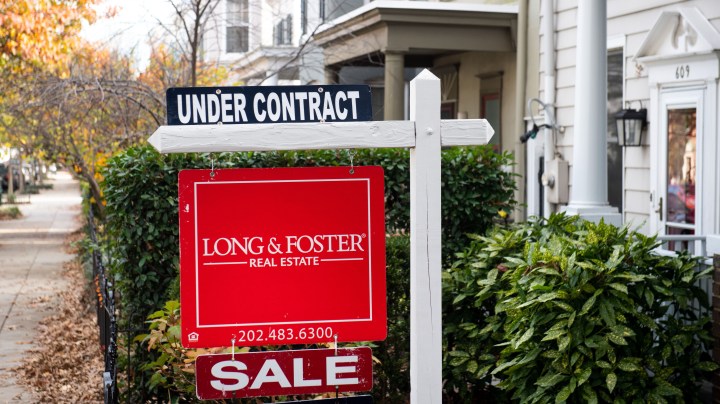
How Fed “tapering” can make mortgages more expensive

Nope, no one’s talking “transitory” inflation anymore. It seems like inflation’s gonna stay at the party a bit too long.
In October, the Federal Reserve’s preferred measure of inflation surged the most, on an annual basis, in more than three decades. Responding to this persistent, rising trend, Fed Chair Jerome Powell has signaled an accelerated timetable for the tapering of the central bank’s bond purchases, opening the door to interest rate hikes.
What does that mean for me and you?
Preeti Kaur and her family moved into their brand-new home in Missouri City, Texas, four months ago. They made the decision to move in July 2020. “To some degree, we recognized interest rates were low, and we decided let’s just start the process,” she said.
Jason Paul just moved to the suburbs of New York last summer. Can you guess why? “It was because of the interest rates. Everyone was saying they’ll never be this low.”
And Esteban Hernandez is moving to a new house in Maryland in a few months. Care to take a wild shot in the dark as to why now? “I wanted to move quickly ’cause I knew that interest rates were at historic lows,” he said.
The common theme here is, of course, low long-term interest rates. And that is the connection between these three new or soon-to-be homeowners and “the Federal Reserve Board,” said Don Kohn, a former Fed vice chair.
Specifically what we are talking about here is the Fed’s bond-buying program. It has been buying up bonds — Treasury bonds and mortgage-backed securities — on the open market.
“When you buy anything on the market, whether it’s bonds or bikes or whatever it might be, that increases the demand for that thing and it increases the price,” Kohn said.
So, the Fed has been driving up prices for bonds. They’re more expensive, which makes them less profitable to invest in. Basically, it lowers the return that everyone gets on these bonds — also known as lowering interest rates.
In the case of bonds backed by mortgages, that has a direct influence on … well … mortgages.
“That means that I, as a homeowner, can refinance my home at a cheaper mortgage rate, or if I’m buying a house, I can finance the home at a cheaper rate,” said Arvind Krishnamurthy, a professor of finance at Stanford.
And, of course, the Fed has been doing all of this because it felt the economy needed the help.
“The bond-buying program is really a supplement that the Fed adopts only when they’re really trying very hard to stimulate growth,” said Ethan Harris, a managing director at Bank of America Global Research.
It’s done on top of the Fed’s other tools for influencing interest rates. And the Fed has decided that the economy doesn’t need the extra help now. So, those mortgage rates are starting to rise.
There’s a lot happening in the world. Through it all, Marketplace is here for you.
You rely on Marketplace to break down the world’s events and tell you how it affects you in a fact-based, approachable way. We rely on your financial support to keep making that possible.
Your donation today powers the independent journalism that you rely on. For just $5/month, you can help sustain Marketplace so we can keep reporting on the things that matter to you.

















